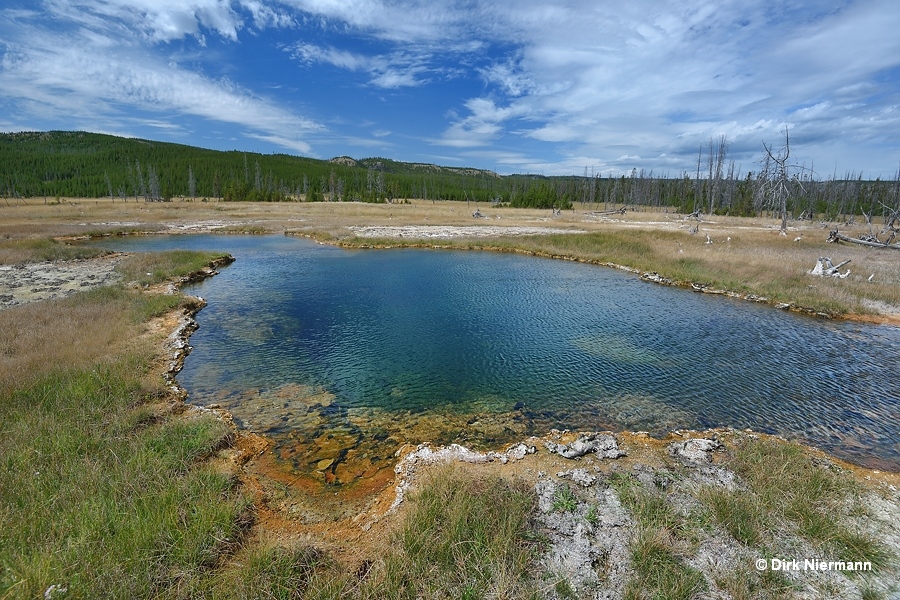Sentinel Meadow Group
The Sentinel Meadows are located within the open area west of Fountain Flat Drive, where Sentinel Creek flows through partly marshy grassland towards Firehole River. A loop trail branches off from Fountain Flat Drive just south of the steel bridge near Ojo Caliente and leads back to the road 1.6 km (1 mile) farther south. To reach the thermal area along Sentinel Creek you have to hike 1.5 km (1 mile) in western direction from the steel bridge. However, just as the trail keeps some distance to Sentinel Creek to avoid the wetland, it never approaches the thermal features. To take a closer look at them, you have to leave the main trail and to accept wet walking boots sometimes.
Three prominent sinter cones dominate the Sentinel Meadows. Already in 1872 members of the second Hayden Survey saw them as guards for the upper valley and thus the area and the creek got its names. On top of the easternmost cone Mound Spring shows superheated boiling. Two small geysers lie on the flank of the cone and the adjacent plain, both splashing only up to 60 cm (2 feet) high.
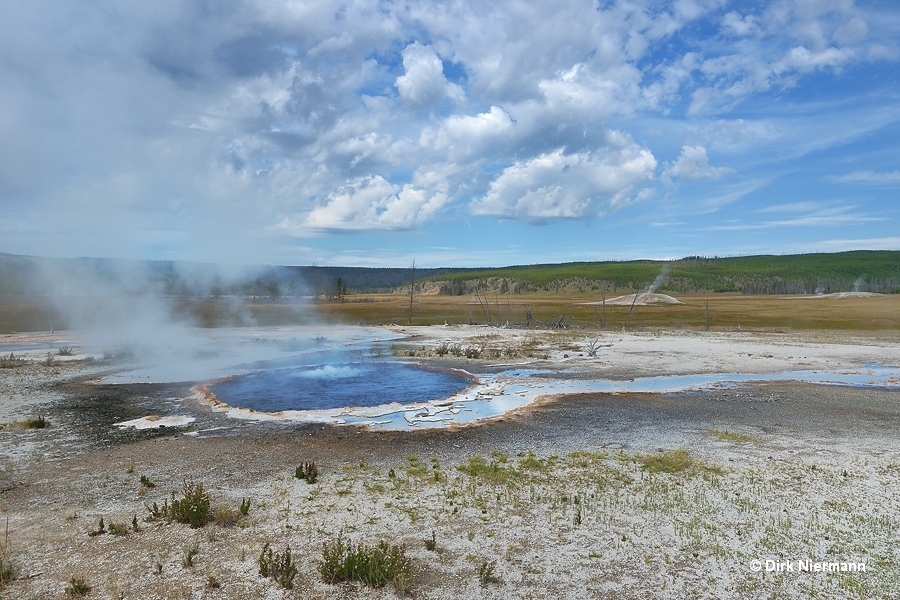
Farther west some trees frame a spot of bare ground, the home of Iron Pot. At an interval of 6 to 9 hours Iron Pot fills with water, erupts up to 2 m (6 feet) height for half an hour and drains thereafter.
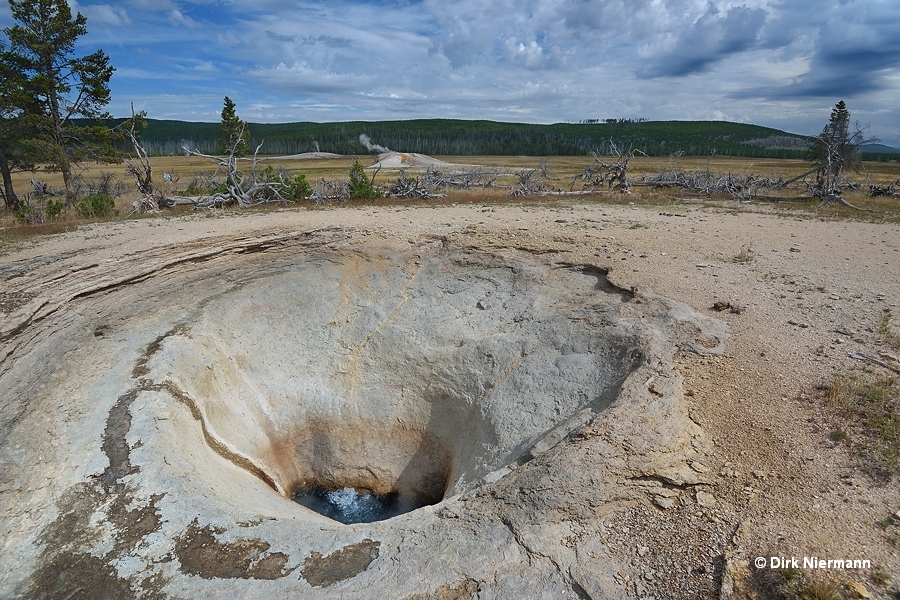
Leaving Iron Pot to the north in direction of Steep Cone, the tallest of the three sinter mounds, you come across an area with tightly packed small springs. LSMGNN011 is an example of a weak spouting spring with intermittent activity.
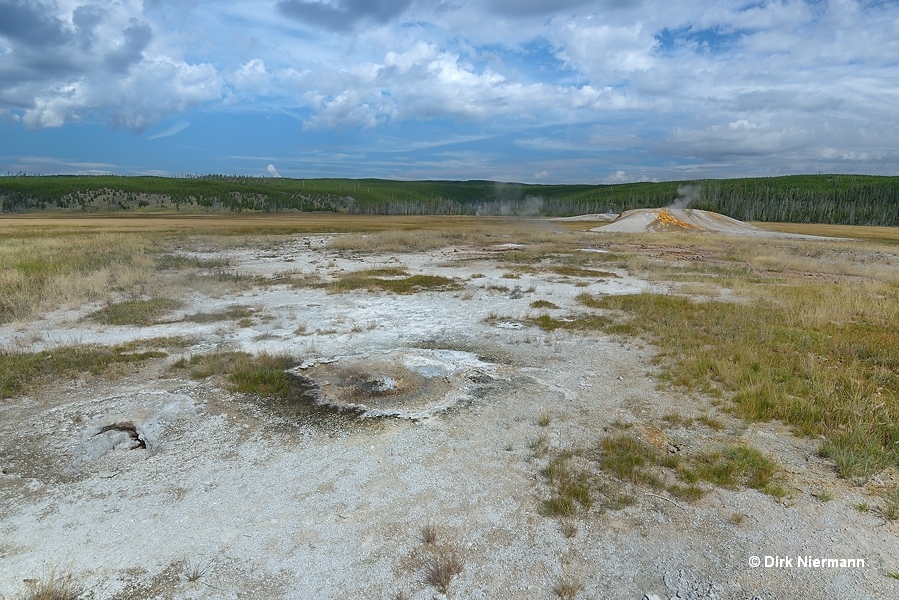
A few feet north of LSMGNN011 The Bulgers are nearly perpetually active. The quiet blue spring in background is LSMGNN024.
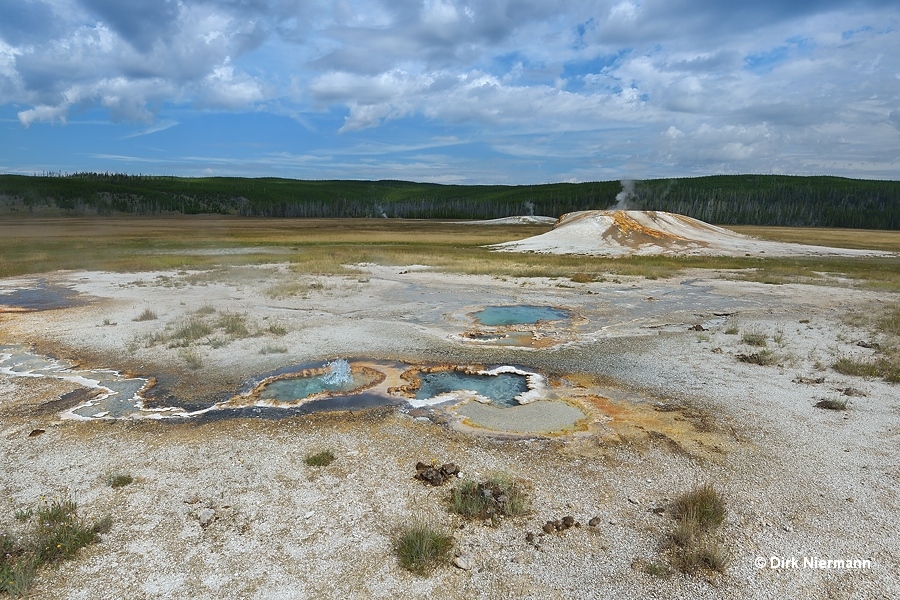
The mound of Steep Cone is occupied on top by Steep Cone Geyser, a superheated boiling pool with less pronounced eruptions.
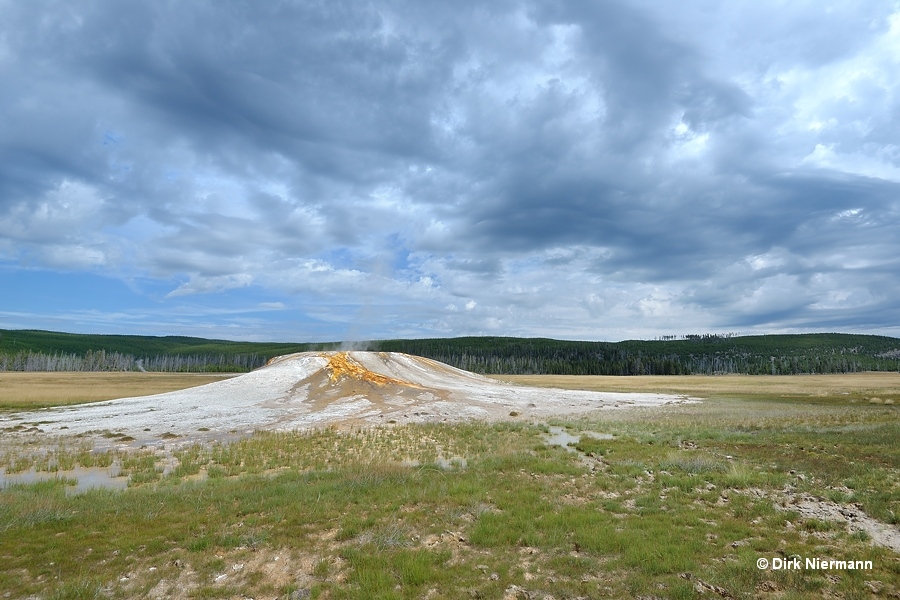
In the same manner Flat Cone Spring sits atop Flat Cone, the northernmost sinter mound. You have to cross Sentinel Creek to reach it. This is easily possible, some spots are even suitable for jumping over. Flat Cone Spring is a geyser, capable of spouting up to some meters (more than 10 feet) high. Furthermore, it is the visually most appealing of the three sinter cone springs at Sentinel Meadows. Next to the northern rim of Flat Cone Spring the tiny Small Cone shows up.
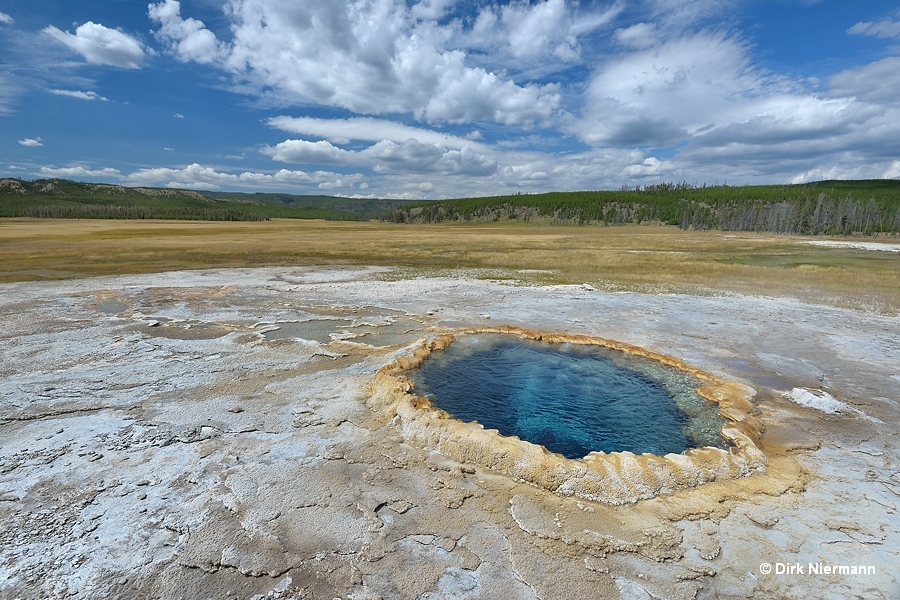
Also north of Sentinel Creek and northwest of Flat Cone, Rosette Geyser is the largest member of a cluster of hot springs. In the 19th century it was known as an active geyser of size, but except a few interruptions in the 1970s it has been dormant for a long time now.
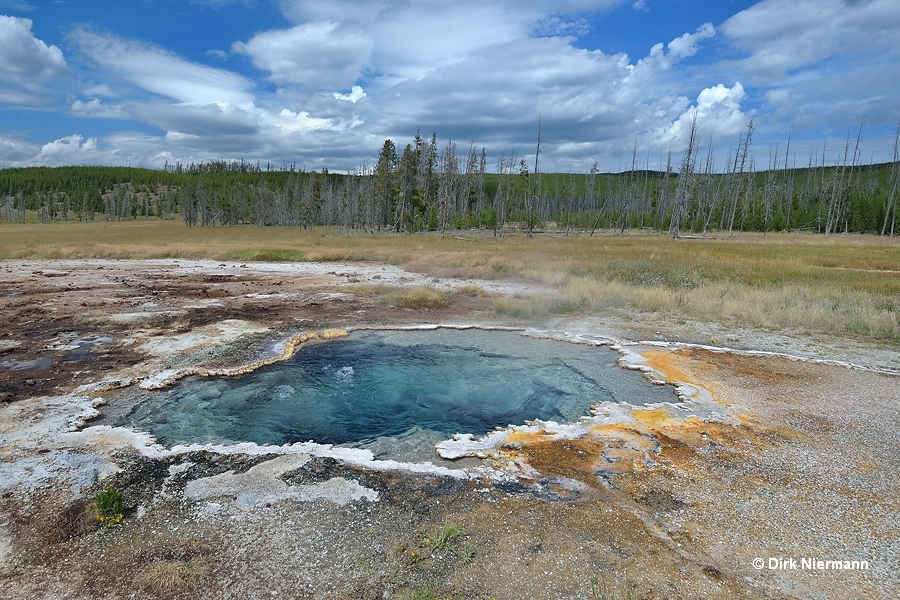
Other members of the Rosette Geyser Cluster are the unnamed perpetual spouters LSMGNN004 and LSMGNN003 west of Rosette.
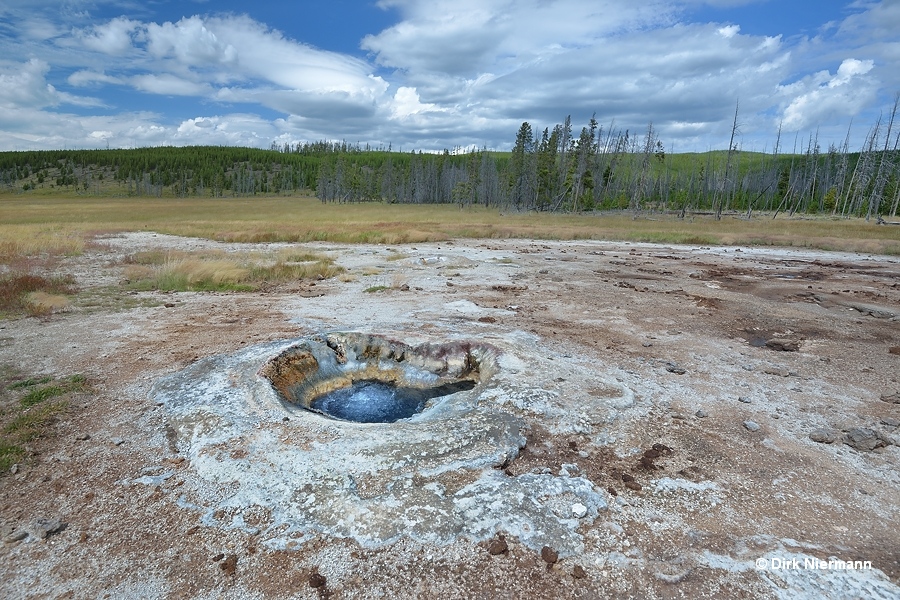
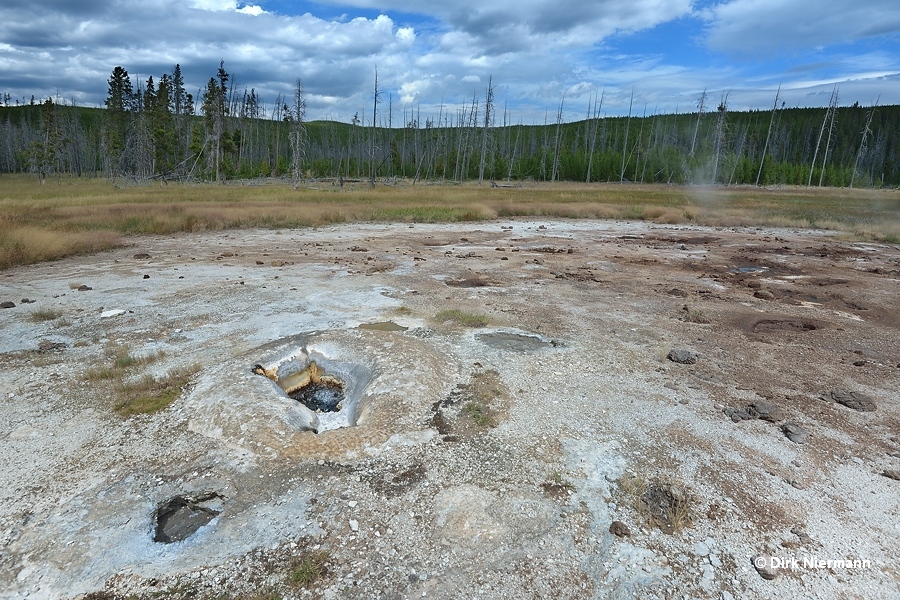
Back on the trail it takes approximately 500 m (0.3 miles) to the spot, where a branch off to The Queen's Laundry is said to be. Unfortunately, we could not detect the branch trail, so we decided to go straight through the wetland. We found the meadow to be crowded by small frogs and met also several Wandering Garter Snakes hunting for them. Surprisingly, The Queen's Laundry and the ruins of the old bathhouse are obscured by trees when you approach from the east, but in spite of that there is no risk to miss them. On location the large, constantly boiling pool is an impressive sight, and even more its colorful runoff with the bathhouse in background.
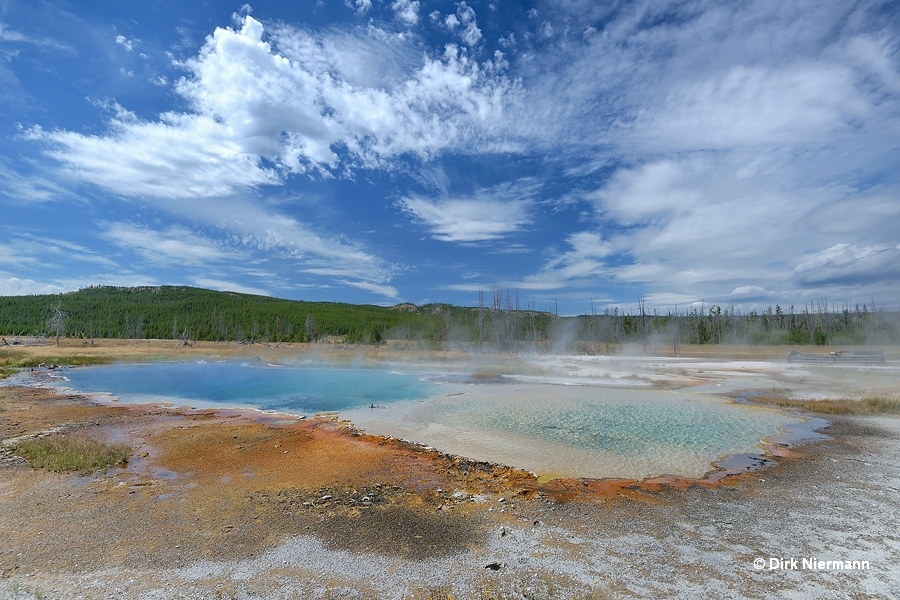
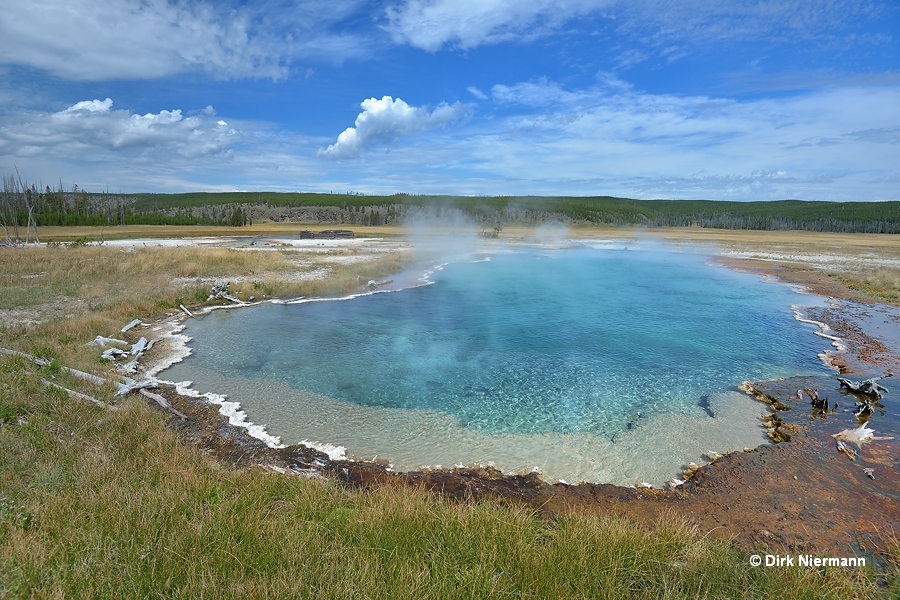
Close to The Queen's Laundry runoff and probably fed by it there once was a pool used for bathing at the end of the 19th century. In fact, the name "Queen's Laundry" refers to the colorful clothes people hung out to dry on nearby trees after they had taken a bath. To enhance comfort former park superintendent P. Norris built a wooden bathhouse in 1881, which was never completed. As the oldest building meant to serve park visitors in the US the ruins are now a National Historic Site.
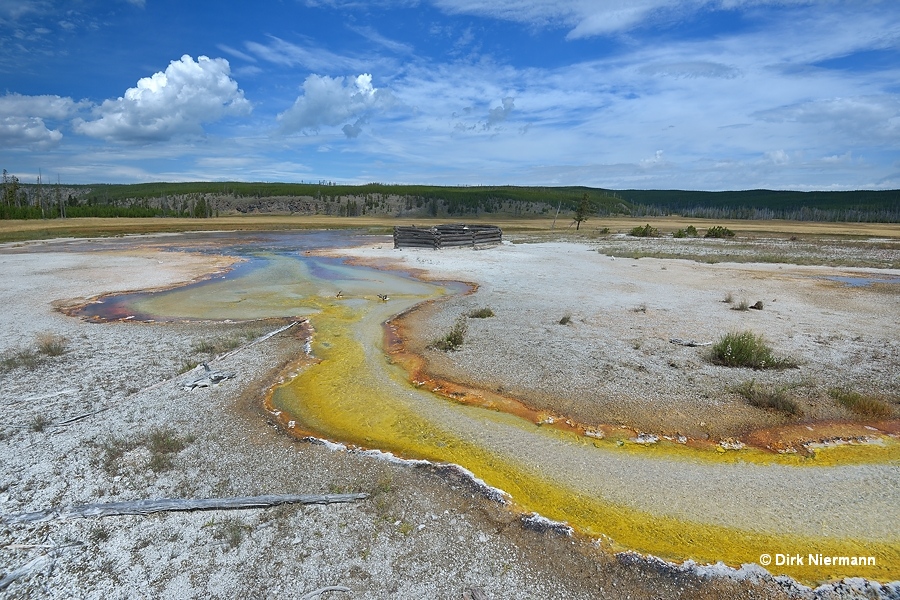
Dumbbell Spring south of The Queen's Laundry is a comparably cool spring with no visible activity.
